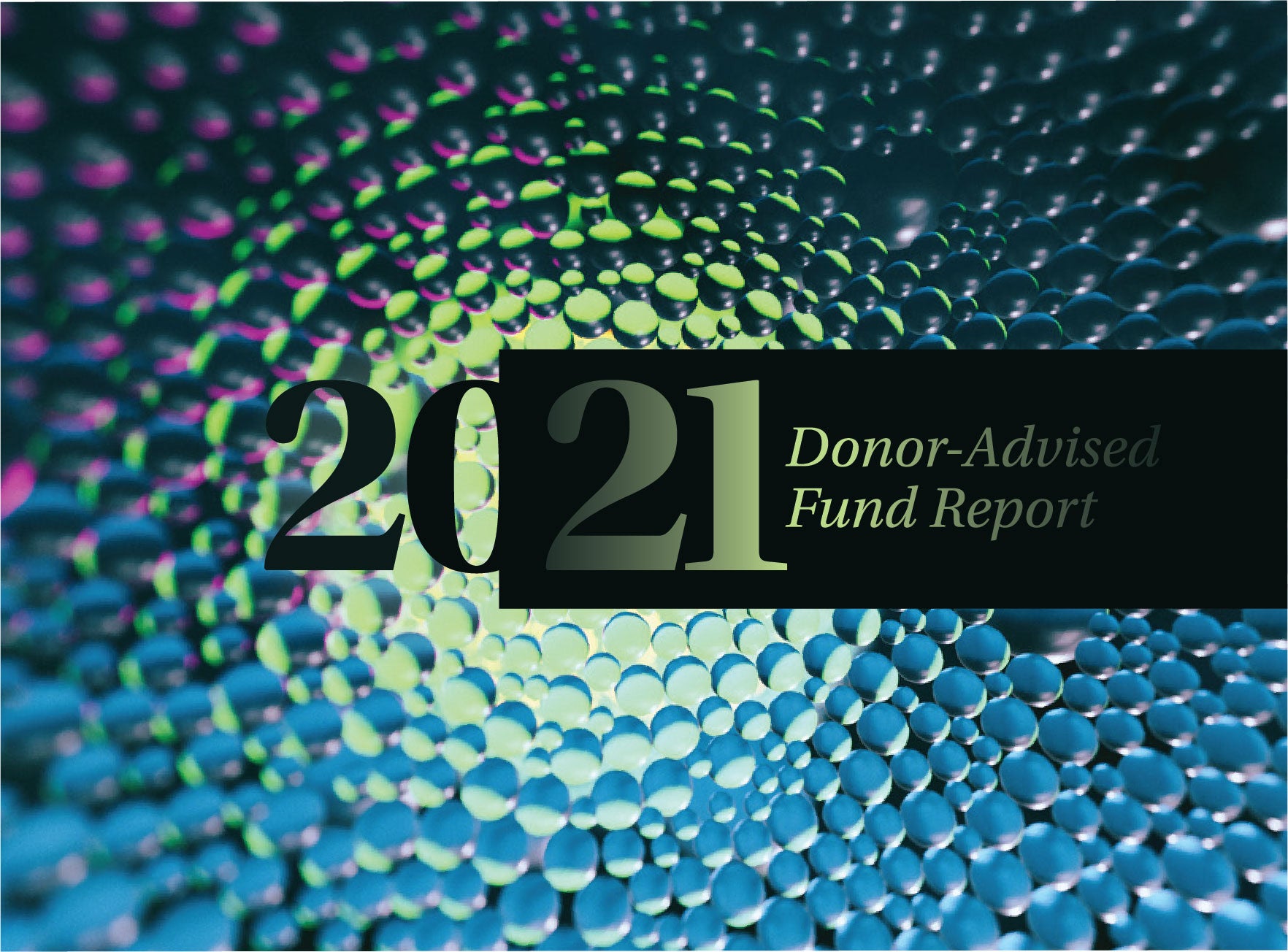Highlights from the 2021 DAF Report

Earlier this week, NPT published its 15th Donor-Advised Fund Report, a comprehensive annual analysis of donor-advised funds (DAFs) in the U.S. The report includes data that reflects the initial DAF donor response to the COVID-19 pandemic and details the most significant grantmaking growth in a decade.
The 2021 Donor-Advised Fund Report examined 2016 through 2020 fiscal year data from 976 charities offering donor-advised funds and measures growth in all key metrics for the 11th consecutive year.
We are pleased to share some significant and historical takeaways in this year’s report.
2021 Donor-Advised Fund Report Highlights
- DAF donors granted at historic levels. Grants from DAFs to qualified charities totaled an estimated $34.67 billion, representing a 27 percent increase compared to 2019 and a new high-water mark. This is the largest year-over-year grantmaking increase in a decade.
- The number of individual DAF accounts in the U.S. rose by 16.3 percent to 1,005,099, passing the one million mark for the first time.
- The DAF payout rate was 23.8 percent, among the highest on record. Payout has remained above 20 percent for every year on record.
- Charitable assets under management in all DAFs totaled $159.83 billion in 2020, a 9.9 percent increase from the revised 2019 total of $145.49 billion.
- DAF contributions in 2020 totaled $47.85 billion. This represents a 20.6 percent increase over the revised 2019 value of $39.69 billion.
Read the full report here for more findings, including a breakdown by DAF sponsor types and additional statistics.
NPT does not provide legal or tax advice. This blog post is for informational purposes only and is not intended to be, and shall not be relied upon as, legal or tax advice. The applicability of information contained here may vary depending on individual circumstances.
To download a PDF of this blog post, click below:



